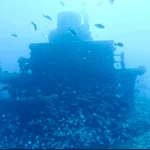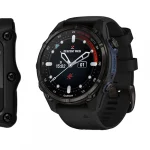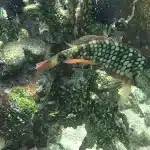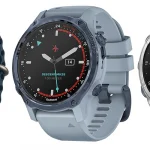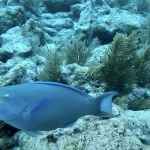Exploring John Pennekamp Coral Reef State Park
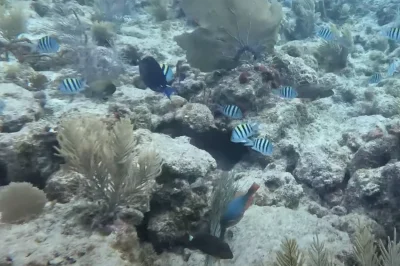
Table of Contents
- Exploring John Pennekamp Coral Reef State Park
- Uncover the Mysteries of the African Queen Canal Cruise
- Mistakes Divers Make When Choosing Local Cuisine and How to Avoid Them
- The Latest Trends in Eco-Tourism You Can Try During Your Breaks
- A Stat-Based Guide to Key Largo’s Best Dive Shops
- How to Perfect Your Snorkeling Technique in Key Largo
- Debunking Myths About Key Largo’s Beaches
- Recovering From Dive Fatigue: The Key Largo Way
Introduction
Key Largo isn’t just a top diving destination—it’s a treasure trove of local experiences waiting to be discovered during your surface intervals. Whether you’re keen to learn more about marine life, indulge in local gastronomy, or simply unwind, Key Largo offers a variety of activities to enrich your diving adventure. This guide will help you transform your surface interval into an unforgettable part of your trip, blending exploration with relaxation.
Exploring John Pennekamp Coral Reef State Park
The Historical Significance of the African Queen Canal Cruise
The African Queen, a steam-powered vessel made illustrious by its role in the 1951 film starring Humphrey Bogart and Katharine Hepburn, stands as a significant cultural and historical icon in Key Largo, Florida. Built in 1912 in England, this boat initially served as a cargo ship for the British East Africa Rail Company before its emergence into cinematic fame. Following its appearance in the classic film directed by John Huston, the African Queen fell into disrepair, eventually being salvaged and restored by attorney Jim Hendricks Sr. in 1982, leading to the establishment of regular tours starting in 1983. A significant restoration effort in 2012, costing approximately $70,000, ensured the preservation and operation of this historic vessel, allowing it to continue enchanting visitors in the region.
Today, the African Queen is docked at the Marina Del Mar, which is part of the Holiday Inn complex at mile marker 100. It offers daily 1.5-hour canal cruises through the scenic Port Largo waterways, where guests can admire the surrounding tropical landscapes and learn about the boat’s fascinating history. As visitors embark on this leisurely journey, they engage with the captain, experience the mechanics of the steamboat, and soak in the rich historical narrative that the boat embodies.
While the African Queen is not directly linked to scuba diving, its presence in Key Largo contributes to the area’s reputation as a unique blend of historical sightseeing and adventure tourism. Scuba divers visiting the region often find themselves intrigued by the vessel’s legacy, adding a leisurely yet enriching experience to their adventures beneath the waves. In this context, the African Queen acts as a charming counterpoint to the diving culture, showcasing the area’s diverse offerings beyond underwater explorations.
Uncover the Mysteries of the African Queen Canal Cruise
Mistakes Divers Make When Choosing Local Cuisine
When diving in Key Largo, divers often overlook the culinary landscape while engrossed in underwater adventures. However, choosing where to eat can significantly impact the overall experience. Here are some common mistakes divers make and how to avoid them:
1. Assuming Freshness of Seafood
Many restaurants in Key Largo serve frozen or low-quality seafood unless explicitly labelled as fresh. Reports indicate that divers often end up with dishes that do not meet their expectations. Always ask about the day’s catch and prioritise places that market their seafood as local.
2. Prioritising Views Over Food Quality
While scenic spots like Sundowners offer breathtaking views, they sometimes deliver disappointing meals and service. Divers might be tempted to choose restaurants based solely on ambiance, leading to regrettable dining experiences. It’s advisable to research online reviews for food quality rather than just scenic appeal.
3. Ignoring Local Recommendations
Diving enthusiasts should actively seek advice from locals, including dive masters and fishing guides. Often, they can recommend lesser-known gems that serve exceptional food, avoiding the tourist traps that may compromise on quality.
4. Overlooking Recent Reviews and Hygiene Issues
Established restaurants can still have fluctuating quality. Reviews citing unpleasant hygiene issues should not be ignored. Checking recent online feedback can help avoid unpleasant surprises related to food safety and overall cleanliness.
5. Underestimating the Value of Self-Catering
If your accommodation includes a kitchen, consider cooking some meals yourself. This option ensures you can control the freshness and quality of what you’re eating, especially after long days of diving.
6. Overpaying for Touristy “Specialties”
Key lime pie is a signature dessert in the area, but many touristy spots charge excessively without offering great taste. Divers should scout local favourites that provide authentic flavours at reasonable prices, such as Mrs. Mac’s Kitchen and Moondog Cafe.
7. Missing Seasonal and Local Specialty Knowledge
Understanding the local culinary scene can elevate a diver’s dining adventures. Ask about seasonal seafood or local specialties that might not be on the standard menu. Engaging with servers and chefs about their recommendations can lead to delightful discoveries.
Mistakes Divers Make When Choosing Local Cuisine and How to Avoid Them
Emerging Trends in Eco-Tourism in Key Largo
Key Largo has become a hotspot for eco-tourism, especially for scuba divers looking to make the most of their surface intervals. The focus on sustainability and conservation allows divers to engage in meaningful activities while enjoying the natural beauty of the Florida Keys.
Key Events & Workshops
- Coralpalooza Dive Day (June 7, 2025)
- This event includes an open house at the Coral Restoration Foundation’s Exploration Center, where visitors can learn about coral conservation through interactive games and prizes.
- Activities may also feature guided dives focused on monitoring and restoring coral reefs.
- Coral Restoration Expedition (September 28 – October 4, 2025)
- Join the Deepwater Conservation Institute for a week-long program that focuses on coral nursery maintenance and reef restoration in collaboration with the Coral Restoration Foundation.
- Participants will learn skills such as coral fragmenting and out-planting, providing both education and hands-on experience.
- Reef Restoration Weekend Dive Trips
- These weekend workshops include coral nursery tours and hands-on sessions at Key Dives, followed by two tank dives for coral out-planting. Such experiences are designed to deepen appreciation for marine ecosystems.
Ongoing Programs
- Coral Restoration Foundation (CRF) Initiatives
- Year-round workshops offer training in classroom settings, teacher certifications, and techniques for ecosystem-based restoration such as herbivore restoration.
- Collaboration with technology firms for enhanced coral monitoring aims to integrate innovative solutions in conservation efforts.
Guided Conservation Activities
While specific kayak tours were not highlighted, several activities such as nursery tours and dive events provide structured, guided experiences that are both educational and engaging, allowing divers to contribute to coral rehabilitation directly.
This growing trend in eco-tourism emphasises sustainable practices, community engagement, and hands-on involvement, making it an enriching addition to any diver’s itinerary in Key Largo.
The Latest Trends in Eco-Tourism You Can Try During Your Breaks
Surface Interval Activities in Key Largo
Surface intervals during diving excursions in Key Largo present numerous opportunities for divers to relax, socialise, and engage with the environment. Depending on the dive operator and the length of the intervals, these activities can vary widely. Here’s a closer look at what you can experience during these breaks:
Guided Marine Life Observation
Many dive operators provide guided marine life spotting during surface intervals. For instance, guides from Sun Sports Charter are known for actively engaging guests by attracting fish to the boat. This offers guests a chance to observe fascinating interactions, such as a barracuda chasing a snapper.
Boat-Based Relaxation and Socialising
Surface intervals often encourage camaraderie among divers. Reviews frequently describe experiences where guests feel like family, bonding during their time on the boat. Relaxation comes easily at less crowded dive sites, creating an inviting atmosphere for conversations and shared stories about diving adventures.
Snorkelling at Dive Sites
Some dive operators, like Pirates Cove Watersports, allow snorkellers to join in on diving trips. This means divers can explore the vibrant surface waters and stunning reefs or wrecks between dives. The snorkelling experience enriches the surface interval, letting guests appreciate the beauty of the marine ecosystem in a different way.
Photography and Observation
While specific activities may not be explicitly detailed in every operator’s offerings, opportunities for photography abound. Operators like Horizon Divers emphasise showcasing breathtaking scenery, exotic fish, and vibrant colours, which suggests your intervals might include time for capturing the incredible marine life and landscapes.
Time and Activity Variations
Surface intervals can last from as little as 10 minutes for quick tank swaps to more extended breaks that allow for various activities. For example, some excursions may span four hours with stops at multiple dive sites, providing structured time for relaxation and exploration.
Overall, the balance between diving and these enriching on-board activities enhances the experience, ensuring that your time between dives in Key Largo is both enjoyable and memorable.
Dive Computers
- Diving Computers for Female Divers
- Wreck Diving Computers
- Beginner Diving Computers
- Low-Light Diving Computers
- Technical Diving Computers
- Freediving Computers
- Underwater Photography Diving Computers
- Cold-Water Diving Computers
- Travel-Friendly Diving Computers
- Multi-sport Diving Computers
- Budget-Friendly Diving Computers
- Advanced Recreational Diving Computers
- Smartwatch-Compatible Diving Computers
- Child-Friendly Diving Computers
- Military or Professional Diving Computers
A Stat-Based Guide to Key Largo’s Best Dive Shops
Proper Breathing and Positioning
To enhance your snorkelling experience in Key Largo, mastering proper breathing techniques and positioning is essential. Start by breathing slowly and deeply through the snorkel to remain calm and conserve energy. It’s beneficial to practice in shallow water first to build your confidence and familiarise yourself with the equipment.
Next, adopt the “3 Hs” posture: align your Head, Hips, and Heels at the surface, with your face angled at about 45 degrees downward. This position minimises strain and improves your visibility of the underwater scenery.
Additionally, it’s crucial to learn how to clear water from your snorkel. If water enters the snorkel, exhale forcefully to remove it. This skill is essential for maintaining an uninterrupted airflow during deep breaths.
Buoyancy Control
Effective buoyancy control can significantly enhance your snorkelling experience. Use your lungs to manage your depth: inhale deeply to float and exhale to sink. This natural technique reduces reliance on flotation devices and makes your movements more fluid.
Experiment with various snorkel gear, such as wetsuits or dive skins, to understand how they affect your buoyancy. While these can provide extra buoyancy, remember they are not a substitute for mastering your swimming technique.
Gear Preparation and Practice
Before hitting the water, ensure that your gear is properly fitted. Test your gear in a pool to verify a good seal with your mask. Practising kicking with fins using a kickboard can help build your leg strength for efficient swimming.
Also, prioritise sun protection with rash guards, hats, or reef-safe sunscreen to prevent burns during extended snorkelling sessions, enhancing your enjoyment in the clear waters of Key Largo.
Marine Interaction
When interacting with marine life, it is vital to keep movements slow and deliberate to avoid disturbing sensitive coral and other aquatic creatures. Observe marine life from a distance while maintaining a horizontal body position to blend into the environment.
For beginners, practising freestyle and breaststroke in advance can help develop the endurance needed for longer swims or navigating through currents, making your snorkelling adventure even more enjoyable.
How to Perfect Your Snorkeling Technique in Key Largo
Surface Interval Activities in Key Largo
When diving in Key Largo, the surface interval is an essential part of your diving experience, allowing time for safety and relaxation before your next dive. During these intervals, divers can engage in various activities to maximise their time, whether they are on the boat or on land.
On-Boat Activities
- Observing Marine Life: While on the boat, you might have opportunities to see intriguing marine behaviours, such as barracudas chasing smaller fish. This engaging observation can enhance your diving experience by connecting you further to the underwater environment you just explored.
- Relaxation: Use this time to unwind by napping or enjoying snacks while taking in the beautiful coastal views of Key Largo. Reading a book or simply soaking in the sun can be refreshing after a dive.
- Light Snorkelling: If time permits and conditions allow, you may have the chance to snorkel in shallow waters near your dive site. This can provide additional exploration of marine life without the need for full gear.
On-Land Activities
- Yoga and Workshops: Organisations like Debris Free Oceans offer land-based events such as yoga sessions or environmental workshops, which can help you reconnect with the environment while you’re not diving.
- Visit John Pennekamp Coral Reef State Park: Explore this stunning park’s mangrove forests and seagrass beds. While the iconic “Christ of the Deep” statue requires a diving trip to visit, the park offers beautiful landscapes and facilities to enjoy during surface intervals.
- Beach Time: Relax at one of the nearby beaches or coastal parks. While short intervals limit time for swimming, simply enjoying the scenery can be a rejuvenating experience.
Practical Tips
- Time Management: Surface intervals typically last from 10 to 30 minutes, so be mindful of how long you engage in activities to maximise your diving schedule.
- Packing Essentials: Make sure to pack sunscreen, water, and healthy snacks to ensure comfort while you enjoy your time above water.
Debunking Myths About Key Largo’s Beaches
Recovering From Dive Fatigue: The Key Largo Way
After a day of exhilarating diving in Key Largo, it’s common for divers to experience dive fatigue. This fatigue can result from various factors, including prolonged exposure to water pressure, physical exertion, and even dehydration. To effectively recover and prepare for your next adventure, consider incorporating local wellness practices into your surface intervals.
Immediate Post-Dive Recovery
- Hydration and Nutrition: Start by replenishing lost fluids. Dehydration can significantly magnify fatigue, so consume water or electrolyte-rich drinks to restore balance. Pair this with light, protein-rich meals such as grilled fish or fresh salads to aid muscle recovery.
- Gentle Movement: Engaging in low-impact activities can help alleviate muscle tightness. Practising simple yoga stretches, such as the child’s pose or seated forward bends, enhances blood circulation and eases tension. If your accommodation has a pool, gentle swimming is an excellent way to relax your muscles without putting additional strain on them.
- Rest: Prioritise adequate sleep, aiming for 7 to 9 hours. Sleep is one of the most effective ways to allow your body to recover fully from the day’s adventures.
Local Wellness Options
While there may not be extensive resources specifically mentioned for recovery in Key Largo, the local tourism scene provides valuable amenities:
- Spa Services: Many resorts offer therapeutic massages that specifically target muscle fatigue. Consider booking a session to enhance your recovery.
- Yoga and Mindfulness Practices: Look for beachside meditation or yoga classes, which can promote relaxation and help restore mental clarity after diving.
- Thermal Therapies: Enjoying warm baths or saunas can promote muscle relaxation. Consult dive medical professionals beforehand to ensure safety after diving.
For tailored recommendations, enquire with local dive shops, such as Rainbow Reef or Pirate’s Cove Watersports, which often have insights on the best wellness options in the area.
Preventive Measures
To minimise future fatigue:
- Choose ergonomic gear that fits properly to avoid overexertion during dives.
- Participate in skill refresher courses to build confidence and reduce stress before diving.
Always be mindful of your body’s signals, and consult a dive medical professional if fatigue persists or worsens.
Recovering From Dive Fatigue: The Key Largo Way
Engaging Surface Interval Activities in Key Largo
During surface intervals in Key Largo, scuba divers can take advantage of a variety of activities that enhance their overall diving experience. These activities help balance relaxation with necessary preparation for the next dive.
Dining and Onshore Time
One of the most enjoyable aspects of a surface interval is the opportunity to dine at local harbour restaurants. Many dive operators offer access to these eateries, allowing divers to refuel and socialise between dives. It’s a perfect way to experience the local cuisine while sharing stories from the morning dive.
Eco-Friendly Water Activities
Active divers may opt for eco-friendly water activities during their breaks:
- Stand-Up Paddleboarding (SUP): Explore the serene waters while getting a workout.
- Kayaking: Paddle through mangroves and local waterways, offering chances to see manatees and other marine wildlife.
These activities provide an engaging way to connect with the natural environment while enjoying the stunning scenery that Key Largo has to offer.
Boat-Based Recovery
During typical 60-minute surface intervals, many divers choose to relax on the dive boat. Activities may include:
- Relaxing on deck: Enjoy the sun and catch up with fellow divers.
- Discussing dive plans: Use this time to review upcoming dives with instructors or dive buddies.
- Preparing equipment: Check and refill tanks, organise gear, and ensure everything is ready for the next underwater adventure.
Safety and Dive Planning
Surface intervals are also critical for safety checks. Divers commonly:
- Review dive computers: Ensure all divers adhere to no-decompression limits and assess dive profiles.
- Conduct safety briefings: Discuss necessary protocols for upcoming dives, especially for wreck explorations like the USS Spiegel Grove.
Longer intervals, exceeding 45 minutes, permit a greater variety of activities and less hurried preparation, making for a more enjoyable diving experience.
Sources
- Florida Keys – The African Queen
- Deep Water Happy – The African Queen
- Wikipedia – African Queen (boat)
- TripAdvisor – Sundowners Reviews
- The Something Garden – Don’t Go for the Food
- YouTube – Key Lime Pie Places
- Coral Restoration Foundation – Coralpalooza
- Deepwater Conservation Institute – Coral Restoration Expedition

